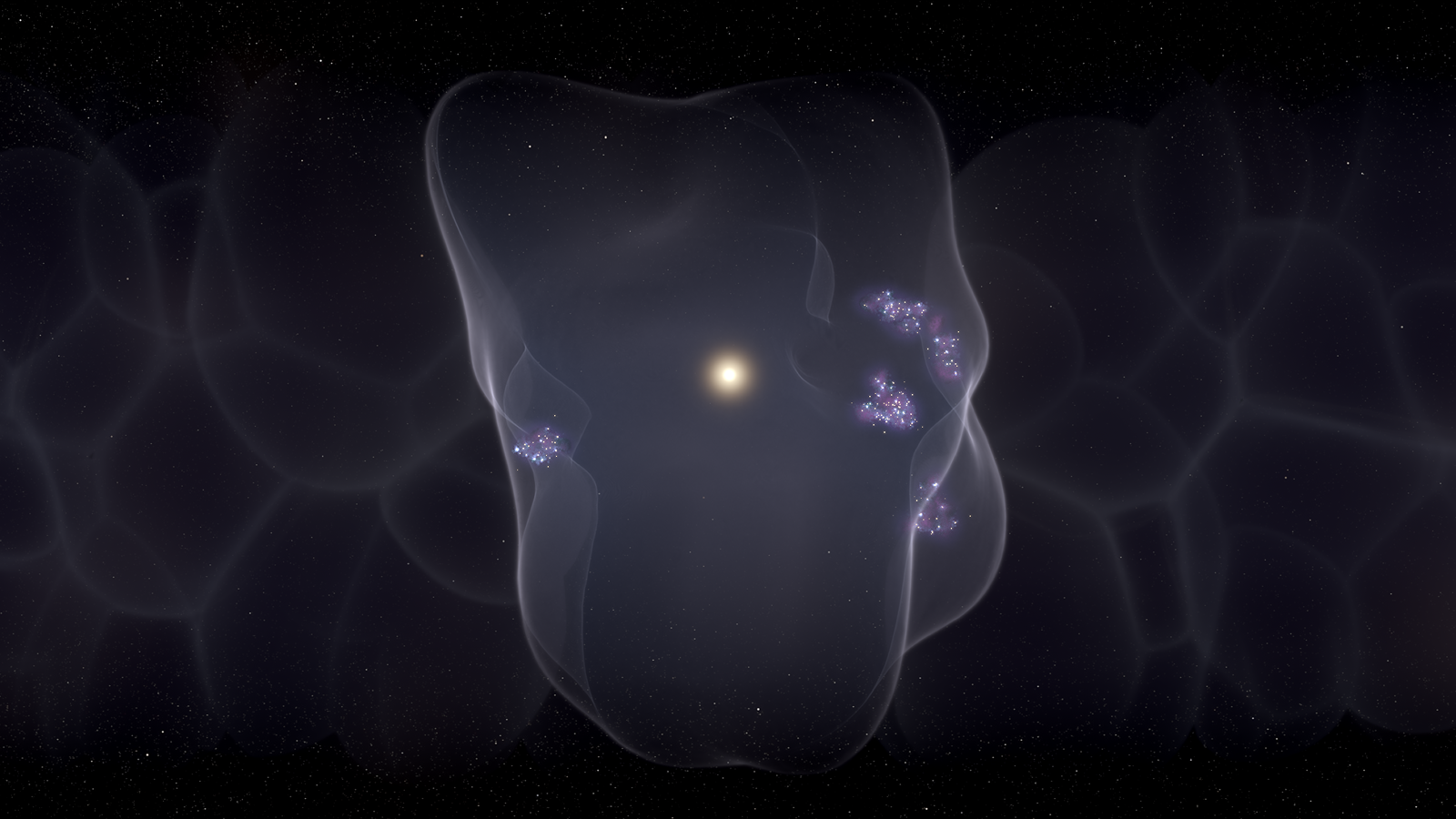Rare 'Obi-Wan Kenobi' star survives death by supernova, returns stronger and brighter
In a galaxy far, far away, a celestial "force ghost" appears for the first time.

In 2012, a shriveled white star in a nearby galaxy reached the end of its life and exploded in a violent, thermonuclear supernova. Such explosions — known as type 1a supernovas — are a common end for billions of stars in our universe, typically resulting in the utter obliteration of the old star at the heart of the blast.
But this time, something went wrong.
As the old star blew up from the inside out, the explosion failed to reach the power and brightness of a typical type 1a supernova. When the dust settled years later, scientists observing the stellar wreckage saw that the old star hadn't vanished at all — it was still there, even bigger and brighter than before.
Somehow, the star had survived its own supernova explosion — a cosmic magic trick never seen before. Now, in a study published in the The Astrophysical Journal, researchers attempt to explain how it happened.
Related: Strange 'reverse shock wave' supernova is exploding in the wrong direction
"This star surviving is a little like Obi-Wan Kenobi coming back as a force ghost in Star Wars," study co-author Andy Howell, adjunct professor of physics at the University of California, Santa Barbara (UCSB), said in a statement. "Nature tried to strike this star down, but it came back more powerful than we could have imagined. It is still the same star, but back in a different form. It transcended death."
The force awakens...
Astronomers first detected the supernova — named SN 2012Z — while its progenitor star was in mid-explosion. Using the Hubble Space Telescope, researchers saw the bright flare of light on the edge of a spiral galaxy some 120 million light-years from Earth, amidst a river of stars called the Eridanus constellation.
Get the world’s most fascinating discoveries delivered straight to your inbox.
Based on its brightness and the type of light emitted, the blast appeared to be a type 1a supernova — a thermonuclear explosion that is thought to occur in star systems where the shriveled husk of a burnt-out star, known as a white dwarf, shares a close orbit with another, larger star. Scientists aren't sure exactly how these explosions occur, but a popular theory suggests that the white dwarf gradually draws in gas from its companion star, until the white dwarf reaches a critical mass that triggers a runaway thermonuclear reaction in its core — resulting in a massive supernova explosion.
Subsequent observations in 2014 revealed that the supernova was stranger than astronomers had initially guessed. The explosion was much dimmer and weaker than a typical type 1a supernova — putting it in a rare category called a type 1ax supernova, or a "failed" type 1a supernova. But more baffling still, the researchers identified a white dwarf star at the exact epicenter of the explosion, shining even brighter than the progenitor star that had been there before.
This was the first time that scientists had ever identified the progenitor star of a white dwarf supernova, the team wrote — and the first time a white dwarf star had apparently survived its own thermonuclear explosion.
"Nobody was expecting to see a surviving star that was brighter," study lead author Curtis McCully, a postdoctoral researcher at UCSB, said in the statement. "That was a real puzzle."
The best clue to solving this puzzle is the weakened nature of the type 1ax supernova, the researchers wrote. It's possible that, when the explosion ignited, it was too weak to fully blow away all the gas that comprised the white dwarf. Following the initial explosion, some of this material may have fallen back onto the partially-exploded star, creating a zombie object called a bound remnant.
Counterintuitively, white dwarf stars have greater diameters when they have less mass, and grow smaller as they become more massive, the researchers wrote. So, when the bound remnant formed after the weakened supernova, it became initially bigger and brighter than its progenitor white dwarf. Over time, the star will likely return to its initial state, becoming smaller and denser, the team added.
Why the star failed to ignite into a typical type 1a supernova in the first place remains a mystery. Further research is needed to figure out what gives a star the oomph it needs to self-obliterate, and why others follow the path of Obi-Wan.
Originally published on Live Science.

Brandon is the space / physics editor at Live Science. With more than 20 years of editorial experience, his writing has appeared in The Washington Post, Reader's Digest, CBS.com, the Richard Dawkins Foundation website and other outlets. He holds a bachelor's degree in creative writing from the University of Arizona, with minors in journalism and media arts. His interests include black holes, asteroids and comets, and the search for extraterrestrial life.


